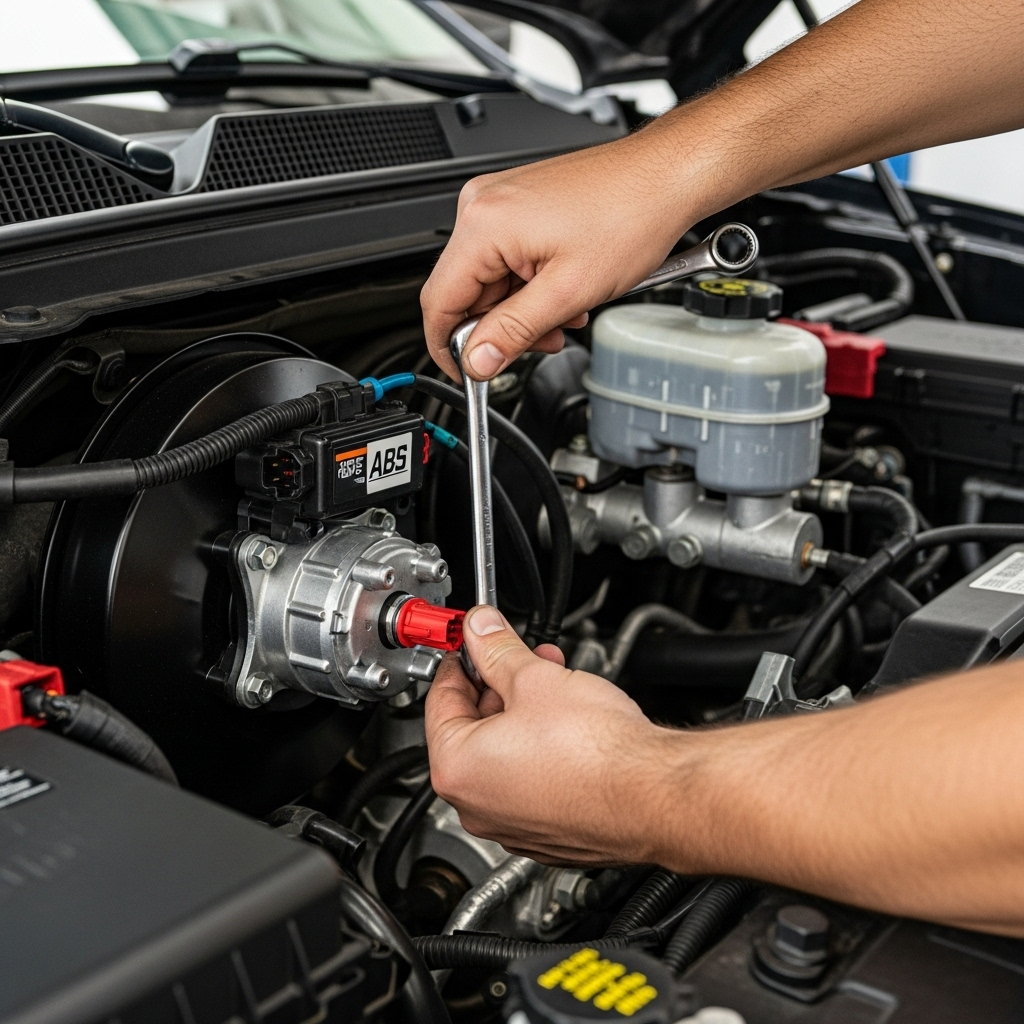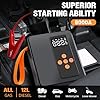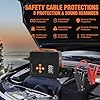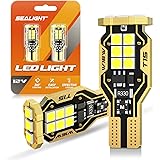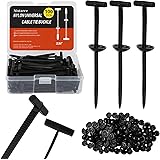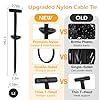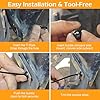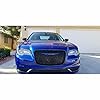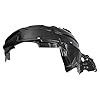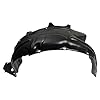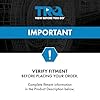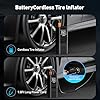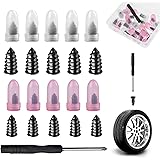Table of Contents
Learning how to disable ABS brakes on Chevy Chevrolet Silverado trucks is a topic that interests many owners seeking greater vehicle control in specific situations. The Anti-lock Braking System (ABS) is a crucial safety feature designed to prevent wheel lockup during hard braking, maintaining steering control in emergency situations. However, some Silverado owners—particularly those who engage in off-roading, dune bashing, or performance driving—may seek to disable this system for various reasons. This comprehensive guide will explore the methods, significant risks, legal implications, and alternatives to consider before attempting to disable the ABS on your Chevrolet Silverado. It’s crucial to understand that modifying your vehicle’s braking system carries serious safety consequences and potential liability issues that every vehicle owner must carefully evaluate before proceeding.
Understanding Your Silverado’s ABS System
Before attempting any modification, it’s essential to understand what the ABS does and how it functions in your Silverado. The Anti-lock Braking System is a computerized safety feature that prevents wheel lockup during braking by monitoring wheel speed and modulating brake pressure to each wheel independently. This system becomes particularly valuable in slippery conditions where locked tires would eliminate any steering control during braking.
Key Components of the Silverado ABS
- Wheel Speed Sensors: Located at each wheel, these sensors monitor rotational speed and send data to the ABS control module.
- ABS Control Module: The computerized brain that processes information from wheel speed sensors and determines when to activate the ABS.
- Hydraulic Modulator: Executes commands from the control module, rapidly increasing and decreasing brake pressure to prevent wheel lockup.
- Electronic Brake Control Module (EBCM): In newer Silverado models, this integrated unit manages both ABS and related stability systems.
- ABS Warning Light: The dashboard indicator that alerts you to potential system malfunctions.
Integration with Other Safety Systems
In modern Chevy Silverado trucks, the ABS is not a standalone system. It’s integrated with several other safety features:
- StabiliTrak: GM’s electronic stability control system that uses ABS components to help maintain vehicle control during cornering and evasive maneuvers.
- Traction Control System: Uses the same wheel speed sensors and brake modulators to prevent wheel spin during acceleration.
- Rollover Mitigation: In some models, the system can detect potential rollover conditions and apply brakes to help maintain stability.
This integration means that disabling the ABS often affects multiple vehicle safety systems simultaneously, creating a cascade of electronic warnings and potentially compromising various safety functions.
Why Consider Disabling ABS? Understanding the Use Cases
While ABS provides significant safety benefits for most driving conditions, certain specialized situations lead owners to consider disabling the system:
Off-Road and Deep Terrain Situations
In deep sand, mud, or snow, locked wheels can sometimes “plow” and create a stopping effect that helps the vehicle slow more effectively than with pulsating ABS brakes. Some off-road enthusiasts find that disabled ABS allows for more controlled descents on steep, loose terrain where maintaining momentum control is crucial.
Performance and Track Applications
For autocross, track days, or drifting, experienced drivers may prefer traditional braking without electronic intervention. These drivers often believe they can achieve better stopping distances through threshold braking techniques without ABS intervention, though this requires significant skill and practice.
Customization and Vintage Conversions
Some owners performing restomods or custom builds may seek to eliminate modern electronic systems for a more traditional driving experience or when implementing custom brake setups that aren’t compatible with the factory ABS.
System Malfunction Concerns
In rare cases where ABS is malfunctioning and creating dangerous braking scenarios (particularly before repairs can be made), temporary disablement might be considered as a safety measure to restore predictable braking behavior.
It’s important to note that for the vast majority of driving situations—particularly on public roads—ABS provides significant safety benefits, and disabling it creates substantial risks that every owner must seriously consider.
Methods for How To Disable ABS Brakes On Chevy Chevrolet Silverado
Several approaches exist for disabling the ABS system in Chevy Silverado trucks, ranging from temporary electronic disablement to more permanent physical modifications. The effectiveness and complexity of these methods vary significantly between model years, as GM has continuously updated the safety systems in these vehicles.
Temporary Electronic Disablement Methods
For many Silverado owners, temporary disablement provides a compromise that allows for specialized use while maintaining normal safety functions for daily driving:
Traction Control/StabiliTrak Disablement
Most modern Silverado models allow some level of electronic stability control disablement through factory-installed buttons:
- Single Press Method: Pressing the traction control button once typically disables engine-related traction control but maintains brake-based intervention and StabiliTrak stability control.
- Extended Hold Method: Holding the traction control button for approximately 5-10 seconds typically disables both traction control and StabiliTrak systems . However, this is usually temporary, as these systems often reactivate automatically at specific speeds (typically around 35-56 km/h or 22-35 mph) .
- 4WD Low Mode: In many Silverado models, placing the transmission in 4WD Low range automatically disables or reduces StabiliTrak intervention, providing more wheel slip for challenging off-road situations.
Limitations of Electronic Disablement
It’s crucial to understand that even with these systems “disabled,” modern Silverado trucks often maintain some level of driveline protection and brake intervention. As one GM representative explained, “Even with the system completely off, driveline protection is still active so you will have some brake intervention if side to side or front to rear wheels are not spinning together” . The cycling noise you hear during wheel slip is “the ABS module building and/or dumping pressures to the needed brake corner for stability or traction control” .
Fuse Removal Method
Many vehicle systems can be disabled by removing relevant fuses, and the ABS is no exception. However, the integrated nature of modern braking systems makes this approach more complex than it initially appears:
Locating the ABS Fuse
- Fuse Panel Identification: Silverado trucks typically have multiple fuse panels, including one under the hood and one inside the cabin.
- Fuse Labeling: In some older Silverado models, the ABS pump fuse was identified as #3, while in newer T1 platform trucks (2019+), users have reported that fuse #24 (sometimes labeled “EBCM” or “Eboost 1”) controls the electronic brake control module .
- Consult Your Manual: Always reference your specific model year’s owner manual and fuse diagram, as locations and labeling vary significantly between generations.
Process and Immediate Effects
- Vehicle Preparation: Park on a level surface, engage the parking brake, and ensure the vehicle is off.
- Fuse Identification: Locate the correct fuse using your owner’s manual or fuse box diagram.
- Fuse Removal: Using fuse pullers or needle-nose pliers, carefully remove the identified fuse.
- System Response: Upon restarting the vehicle, you’ll likely see multiple warning lights including the ABS light, brake warning light, and potentially the check engine light .
Important Limitations and Warnings
Recent user experiences with newer Silverado models suggest that fuse removal may have unintended consequences. One 2020+ Silverado owner reported that after removing fuse #24, “the brake was soo weak” and they experienced multiple system warnings . Another user noted that unlike earlier models, newer trucks seem to have “safeguards built in now” that prevent simple fuse removal from cleanly disabling only the ABS .
Wheel Speed Sensor Disconnection
This method involves physically disconnecting the sensors that provide wheel speed data to the ABS module:
Sensor Locations
- Each wheel has a dedicated speed sensor typically mounted near the wheel bearing or brake rotor.
- Access usually requires removing the wheel and potentially some brake components.
Disconnection Process
- Safely lift and secure the vehicle, then remove the appropriate wheels.
- Locate the wheel speed sensor—a small electronic component with a wiring harness connection.
- Disconnect the electrical connector carefully, avoiding damage to the wiring or connector tabs.
System Response and Limitations
Disconnecting wheel speed sensors will typically illuminate the ABS warning light and disable the entire ABS system. However, this approach has significant drawbacks:
- It often triggers multiple system warnings beyond just ABS.
- It may affect other systems like 4WD functionality, with one user reporting that “the 4×4 was disengaging” after unplugging a wheel speed sensor .
- It creates an ongoing dashboard warning until reconnected.
- It requires physical access that can be time-consuming.
Comparison of Disablement Methods
| Method | Effectiveness | Difficulty | Reversibility | Potential Side Effects |
|---|---|---|---|---|
| Traction Control Button | Partial disablement | Easy | Instant | Systems reactivate at speed; some brake intervention remains |
| Fuse Removal | Varies by model year | Easy to Moderate | Easy | Possible weak brakes; multiple warning lights; affects multiple systems |
| Wheel Sensor Disconnection | Full ABS disablement | Moderate | Moderate | Affects 4WD systems; multiple warnings; requires physical work |
Critical Risks and Considerations
Attempting to disable the ABS on your Silverado involves significant safety, legal, and practical implications that must be carefully weighed:
Safety Implications
- Increased Stopping Distances: Without ABS, wheels can lock during hard braking, potentially increasing stopping distances, particularly on wet or slippery surfaces.
- Loss of Steering Control Under Braking: Locked wheels cannot provide steering input, eliminating your ability to steer around obstacles while braking heavily.
- Complete Brake System Compromise: In some disablement attempts, users have reported significantly weakened braking performance beyond just losing ABS functionality .
- Electronic System Conflicts: Modern vehicles have interconnected safety systems, and disabling one can create unexpected conflicts or reduced functionality in others.
Legal and Liability Consequences
- Regulatory Compliance Issues: Tampering with federally-mandated safety systems may violate regulations in some regions.
- Insurance Implications: Modifications to safety systems could void aspects of your insurance policy or create liability issues in the event of an accident.
- Resale Value Impact: Permanently modified safety systems can significantly reduce your vehicle’s value and marketability.
System Limitations and Fail-Safes
Recent user experiences suggest that newer Silverado models (approximately 2019+) have more sophisticated safeguards that make complete ABS disablement more difficult. As one dealership employee indicated, “you can’t pull a fuse anymore there are safeguards built in now” . These integrated safety systems are designed to maintain some level of function even when owners attempt disablement, potentially creating unpredictable braking behavior rather than cleanly disabling the ABS.
Professional Alternatives and Safer Approaches
Before permanently disabling your Silverado’s ABS, consider these alternative approaches that maintain safety while addressing specific needs:
Proper Off-Road Mode Utilization
- Learn how your specific Silverado’s off-road modes function—many are programmed to allow more wheel slip and different ABS behavior in legitimate off-road situations.
- Understand the differences between 2WD, Auto 4WD, 4WD High, and 4WD Low settings, as stability system behavior often changes between these modes.
Aftermarket Tuner Solutions
- Professional tuning solutions like HP Tuners can sometimes modify ABS and stability control parameters without completely disabling systems .
- These approaches should only be performed by experienced professionals who understand the full implications of these changes.
Component Upgrades for Performance
- Consider upgrading to high-performance ABS components or brake systems specifically designed for your intended use.
- Some aftermarket brake controllers offer more adjustable ABS functionality for specialized applications.
Track-Oriented Solutions
- For legitimate competition use, explore proper race-oriented brake systems that either function without ABS or include competition-grade adjustable ABS.
- Many tracks have specific requirements for safety systems that may prohibit simply disabling factory ABS without proper replacement systems.
Conclusion
Understanding how to disable ABS brakes on Chevy Chevrolet Silverado reveals a complex landscape with significant safety implications. While various methods exist—from simple fuse removal to more complex sensor disconnections—modern Silverado models present increasing challenges for those seeking to completely disable this crucial safety system. The integration of ABS with stability control, traction management, and other vehicle systems means that any modification often has unintended consequences that can compromise both safety and vehicle functionality.
For most Silverado owners, the risks of disabling ABS significantly outweigh the potential benefits. The temporary electronic disablement methods provided by GM offer a reasonable compromise for specific situations while maintaining crucial safety functions for normal driving. If you have legitimate specialized needs for your Silverado, consulting with professional automotive specialists who understand both your vehicle’s systems and your intended application is strongly recommended over attempting DIY disablement that could create dangerous driving conditions or legal complications.
Key Takeaways
- Modern Chevy Silverado ABS is deeply integrated with stability and traction control systems, making complete disablement difficult.
- Temporary electronic disablement is possible but typically reactivates at speed and maintains some brake intervention.
- Fuse removal and sensor disconnection methods often cause multiple system warnings and potential braking performance issues.
- Safety risks of ABS disablement include longer stopping distances and complete loss of steering during hard braking.
- Professional tuning or proper use of factory off-road modes often provides better solutions than complete ABS disablement.
Sources
- GM-Trucks.com Forum: ABS Fuse Location – 2019-2025 Chevy Silverado
- GM-Trucks.com Forum: Traction Control – 2019-2025 Silverado & Sierra

